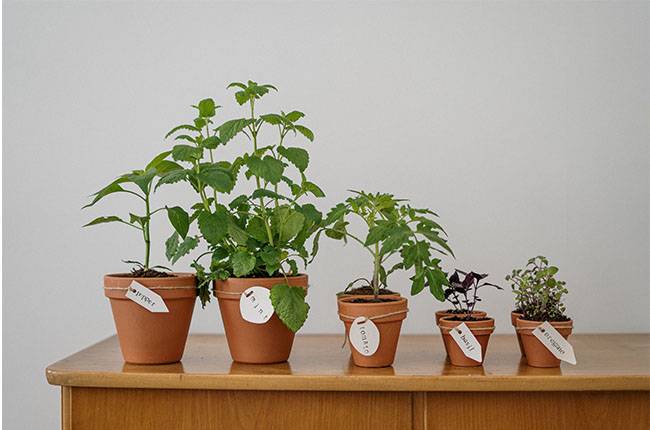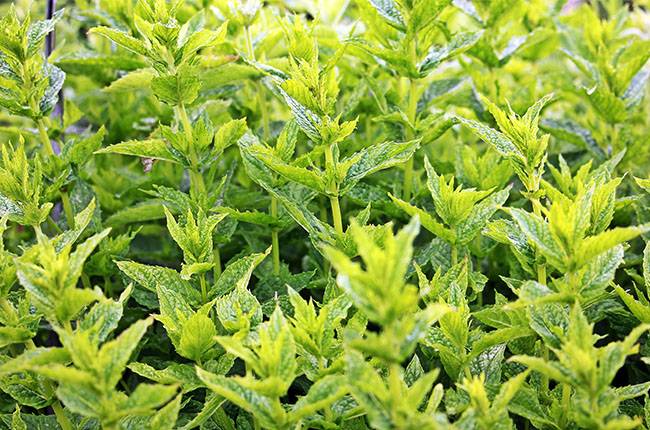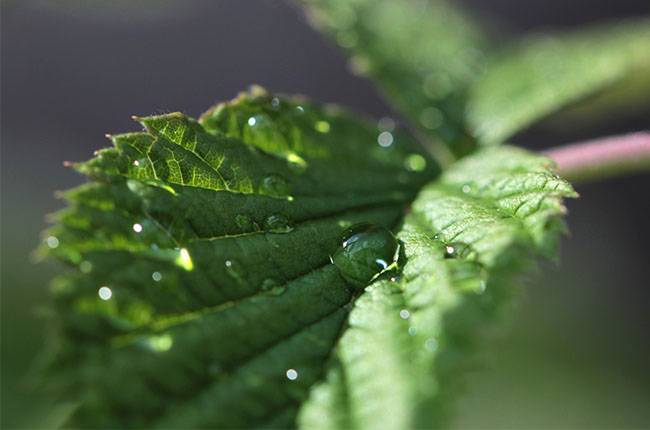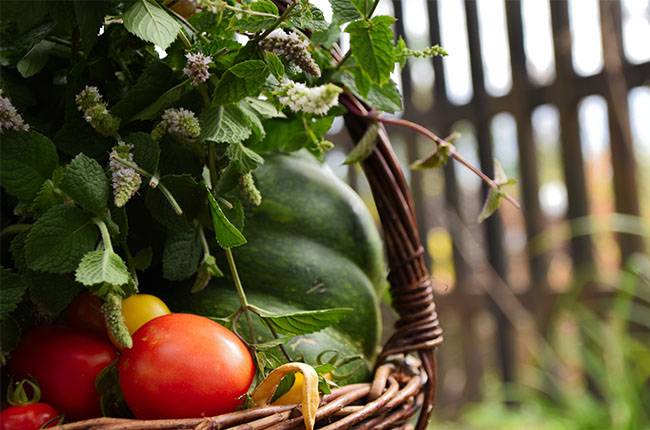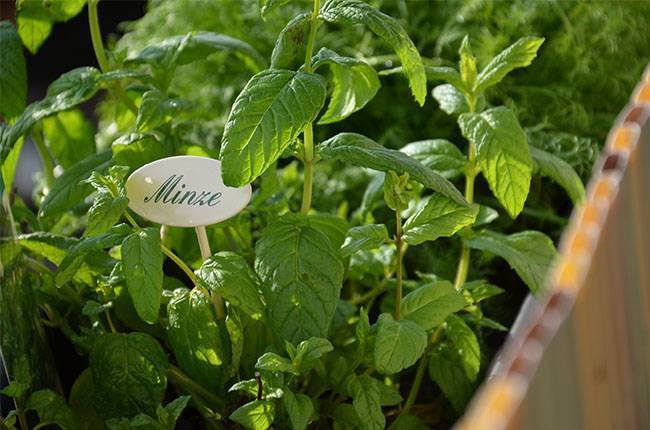
Mint is one of the most famous spices, it’s hard to imagine the taste without it. Mint is use in many dishes and drinks such as the famous mojito cocktail, a refreshing cocktail associated with summer, the sea, and blissful idleness). So how to grow mint?
Mint can be bought in supermarkets or markets without any problems, but it is more fun to grow it in your own summer cottage or next to your window.
In nature, there are many varieties of mint, and in addition, many varieties are artificially bred by breeders. Each mint variety has its own distinctive mint-mint hue.
The most common and most fragrant is mint, a cross of several plants bred by the British more than three hundred years ago. Typically, the variety (Latin name – Mentha piperita) is used in the culinary, spice, pharmacological and chemical industries because it contains more peppermint essential oil than other types.
Peppermint comes in two forms – black and white. The former has a whiter smell, later than white, but has a more floral aroma and is therefore considered more popular.
Did you know? Peppermint has been used by humans since time immemorial. Even the ancient Egyptians placed fragrant thin branches of this plant in the tombs of the pharaohs. However, mint got its name from the ancient Greeks – it was named after the nymph Menta (Mentha, Menfa, Naiad), who was the beloved of Hades, the god of death and ruler of the underworld.
Growing mint can be very beneficial to the grower. This plant is widely used in the preparation of side dishes or seasoned dishes in cooking and also has unique healing properties.
What can we say about mint tea! This fragrant, mild, refreshing, thirst-quenching, and revitalizing drink is a favorite traditional treat for thousands of tea gourmets.
WHERE IS THE BEST PLACE TO GROW IT?
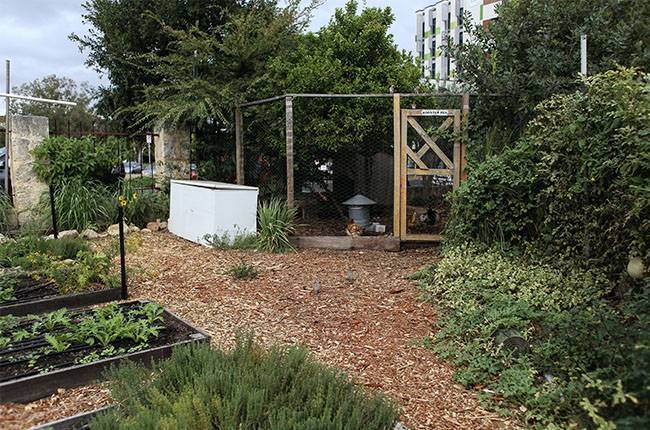
When choosing a place for a future garden bed, many new plant growers ask themselves: Is it better to grow mint’s in the sun or in the shade?
The ideal place to grow mint is an open area with direct daytime sunlight and fertile, moist, and deeply tilled soil.
Since mint grows quite fast due to its creeping rhizomes, when laying out a garden bed it is advisable to limit its edges with slabs of stone, iron, or plastic and to dig strips of protective material at the depth of the plant roots.
WHEN TO SOW SEEDS
Mint is a frost-resistant plant, so it can be planted in the fall as well as in the spring or summer. However, for each mint breeding method, a single or single planting is optimal.
Mint should be planted in early spring by sowing seeds in open ground because in winter the seeds will freeze dry.
On the other hand, if you sow the seeds in the summer, the seedlings of the perennials will not have time to take root and become strong before the first cold weather starts.
The nutritional method of planting mint can also be done in the spring, but not at an early stage, but after the vegetative material has fully matured.
PLANTING MINT IN THE FALL
Sow mint leaves with stems and roots at any time of the year – spring, summer, or autumn, depending on the climate.
In the northern regions, it is still recommended to end mint planting in August so that the plant has enough rooting time.
In addition, in the case of late sowing, it is worth noting the additional preparation of the mint for winter in order to avoid the bush from freezing – covering the garden bed with peat or wood chips up to 20 cm (7.87inch) thick.
This process is especially useful in areas with frosty winters and insufficient snowfall.
Of all the possible propagation methods, the latest one is the division of the bush, which can be done a few days before the first frost.
SELECTING THE SEEDS TO BE SOWN
Self-collecting seeds from the parent plant is a rather painstaking and complex process.
In addition, artificial mint varieties usually produce seeds that are not grown from the parent plant, but a completely different variety – different from the seeds used by breeders to breed hybrids.
First of all, this danger is related to mint, which is known to be the most popular mint among gardeners.
Of the curly mint seeds, about two-thirds do not inherit curl, a common wild variety.
HOW TO CHOOSE MINT SEEDLINGS
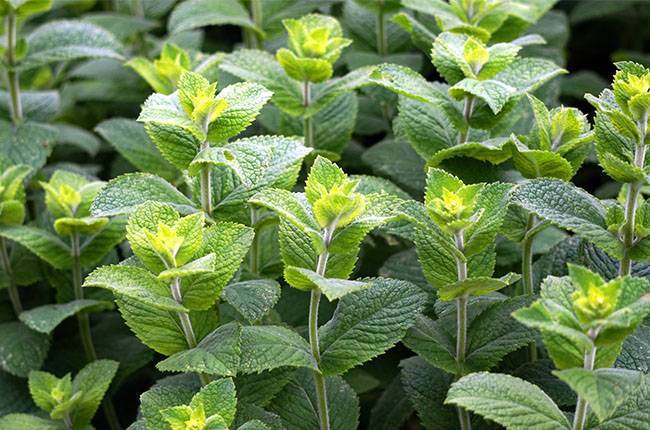
Mint does not propagate seeds very well, so it is best to leave this matter to experienced gardeners. It is much easier to buy ready-made mint seedlings, especially because there are so many choices.
Specialty stores – places that usually offer a wide variety of seedlings from which you can choose the plant you like.
The same applies to farmers’ markets, but it is dangerous to buy seedlings from unproven breeders because the plants can be infected with pests and diseases that can damage not only the seedlings, but also other inhabitants of the garden plot.
As a material for future seedlings, you can use common buds of adult plants, which can be obtained at a neighbor’s country house or in a friend’s pot.
To do this, cut the sprout with a sharp knife or scissors at a height of 1cm (0.39inch) from the junction with the trunk of the parent plant. Place this sprout in a glass of water and when the sprout’s germinating white root grows to 5cm (1.96inch) long, it’s ready!
The same process can be done using mint, which is sold in supermarkets or market grocery stores. This method does not guarantee good results, but it can be used as an experiment when no other option is available.
The plants should not wilt or dry out, and the sprouts should not exceed 6-8cm (2.36-3.14inch) in height, otherwise the plants will have difficulty rooting.
STEPS TO GROW MINT
Choose a place
It is best to plant mint in a sunny place, where there is shade at midday. Bushes grow faster in long periods of light.
They are often in dense shade near building walls or under trees that are spreading and will not die or wilt, but their growth will slow down.
Sunlight
For mint, you need to choose a warm, sunny location while protecting it from the scorching heat of the sun. Mint is an extremely water-rich plant, so it feels very dry.
At least four hours of sunlight per day should illuminate the mint, and in the middle of the day, the plant should ideally be in partial shade.
For growing mint indoors, the south, southwest, or east side is the best choice. Long daylight hours accelerate the growth of mint, so artificially increase the lighting hours on-site if you plan to implement the plant.
If the site does not get enough sunlight, this will not be a serious obstacle to mint growth as long as the plant is not oversaturated with water.
Soil
Mint does not require high-quality soil.
Soil that meets 5 conditions is ideal for her.
- sunlight;
- air and moisture penetrate freely into its roots.
- contains a lot of moisture, but is not soggy
- rich in humus
- Loamy or sandy loamy soils.
Mint prefers loose, fertile soil with plenty of light. It can grow on calcareous soils, but the fragrance will not be too strong. My mint grows entirely in the shade, among birch trees, golden bell cypress, gazebos, and ponds.
The soil has been fertilized there for a long time, but this has not affected the mint yet. She also feels good among the buckthorn trees. Mint cannot survive in heavy clay soils with standing water.
If the soil in the area contains a lot of lime, it will not disturb the growth of mint, but its leaves will give off a faint aroma.
Dense clay soils that stagnate in water for a long time are contraindicated in the culture. Even proper care on such land will not save the plant.
Before planting mint, prepare the site in the standard way: select weeds, dig them out, and fertilize. Organic and mineral components are suitable for her.
The height of the bed depends on the type of soil. If it dries quickly, it is better to lower it. This will help to keep the moisture in the ground for a longer time.
If the soil in the country is wet, it is worth watering at a higher level. They will protect the roots of the plant from rotting.
Before planting plants, the soil should be enriched with the following fertilizers: humus; potassium chloride; ammonium nitrate; calcium superphosphate; wood ash.
Neighbors and predecessors
Mint will be a good neighbor for almost all garden crops. It attracts insects for pollination, repels many dangerous pests, and improves the taste of ripe vegetables.
Experienced gardeners recommend planting it next to tomatoes, cabbages, beets. And if there will be common nettle next to mint, its leaves will smell stronger because more essential oils will form in them.
An important point: if the plant is attacked by pests and diseases, no amount of care can save it. Treating mint bushes with fungicides can make them unsafe for consumption or medicinal use.
To prevent infection, it is best to place it at least 60-80cm (23.6-31.4inch) away from flower beds, beds with vegetable crops, and spicy herbs.
To ensure that mint plants do not fall over, air must circulate between the plants and penetrate easily to the roots of the plants. A good drainage system is also important.
Seedlings should be checked regularly, paying particular attention to the inside of the mint leaves, where insects like to hide. Once pests are found, they should be rinsed off with water from a hose.
Mint develops well after legumes, tuberous crops, and perennial grasses. It has a powerful root system, so it is best to place separate beds for plants that would otherwise simply clog up their neighbors.
Mint areas do not require frequent replacement. In one place, her bushes can remain for up to 10 years. But they will have to be renewed from time to time.
Mint is suitable for rockery gardens. If you plant it in large quantities, its bushes will quickly cover the soil with a decorative green carpet.
MINT CARE
Sow mint and care for the seedlings in the same way as any other crop. the first shoots should appear in 15-20 days, after which the container with the shoots should be moved to a well-lit area, which will help prevent pulling up of the seedlings.
If the seedlings will lack light, they will need artificial lighting. The best temperature for seedling growth is between 20-25°C (68-77°F).
However, if they are being raised in low light conditions, then the seedlings should be kept cool 15-17°C (59-62.6°F). Once the plants are grown, they can be planted in the garden and kept at home.
If they are grown at home, they need to be corrected at different stages of the growing season. For example, in summer, when growth is at its peak, do not allow the substrate to dry out, as this will kill the plant.
Also, if mint lacks moisture, it increases the risk of pests. In winter, water the shrubs very carefully, as it is dangerous to let the substrate be over-watered in cold weather.
As the indoor heating is on during winter, the humidity is low during this period, so don’t forget to moisten your shrubs systematically with water at room temperature with a sprayer.
Mint should be protected from drafts and she needs protection from diseases and various insect pests. In general, it is quite easy to grow mint in indoor conditions.
For an inconspicuous plant like mint, the work to be carried out includes systematic (preferably daily) watering of the garden and regular mulching of the soil with wood ash and compost added to the mulch. Soil fertilization is carried out twice a year: the first time – in spring – and the second time – in autumn, on the eve of frost, with deep digging.
HARVESTING AND STORAGE
The best time to harvest mint is during the flowering period when the plant accumulates a large amount of essential oil.
To prepare the mint leaves for winter, they need to be spread in thin layers on thick paper to dry them well. When the mint is ready for storage, place the dried leaves in a dry, airtight container and place the container in a dark place.
There, the fragrant and healthy mint will be preserved for a long time, regularly providing families with condiments and delicate teas for family meals, or keeping them from the blues, discomfort, and annoying fatigue while making families happy!
Mint is harvested in the first year of planting. Before flowering, the leaves are picked for drying, during which they are rich in useful substances. They are dried in bunches in a cool place. We usually dry them in the attic under the ceiling. This way the mint will retain its flavor and aroma throughout the winter.
If you wish, you can taste the herb fresh, for which you need to cut it off, rinse it, and put it in the refrigerator in a thin damp cloth in a container. I put it in a place without cloth but stored it at 0 ° C (32 ° F).




